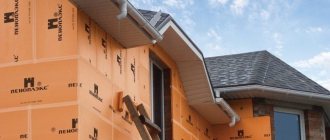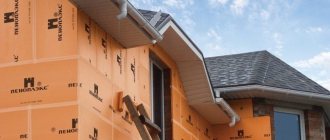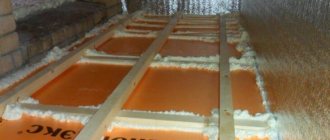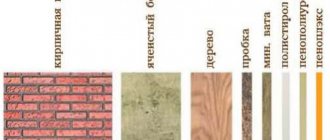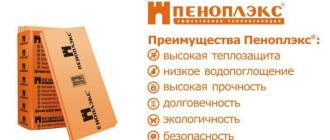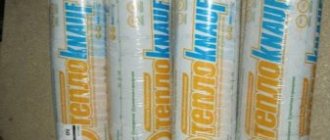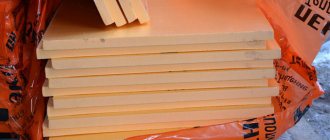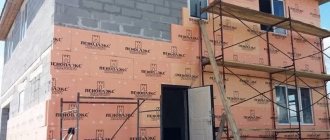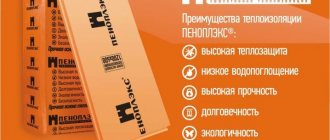Penoplex is a popular construction thermal insulator. It appeared on the market in the early 40s of the last century, it was developed by the American company Dow Chemical as a non-sinking material for watercraft. After World War II, its other properties were appreciated, including low heat conductivity. It began to be used in the construction of frame houses in the USA and Canada. It is made from a semi-finished product - polystyrene foam granules using the extrusion method. Penoplex is in demand due to its light weight, ease of installation and affordable price. But how environmentally friendly and fire-resistant is polystyrene foam?
How to produce
The first installation for the production of extruded polystyrene foam appeared in the USA more than half a century ago. In the manufacture of this material, special chemical foaming agents are used - blowing agents. The chamber of special equipment first becomes very hot. Then polystyrene granules are fed into it. After they melt, porophores are added to the mixture. As a result, polystyrene foams and increases significantly in volume.
The resulting mass, which has the appearance of whipped cream, is then fed into an even layer of a certain thickness onto a conveyor belt and cut into slabs of the required dimensions. For example, substances such as ground perlite, citric acid, and sodium bicarbonate can be used as blowing agents in the manufacture of expanded polystyrene.
This technology produces all types of such materials, including Penoplex, Extrol, Technoplex, etc. During the production of such materials, various ingredients can be added to them to change, for example, characteristics such as strength, density, flammability. "Penoplex", which includes such components, has the best technical and operational characteristics.
Material advantages
Consumers consider the advantages of Penoplex primarily to be a low degree of thermal conductivity. In terms of this indicator, such slabs are superior to even mineral wool, which is very popular, for example, among private developers. Another advantage of Penoplex is its light weight. It is very easy to transport such slabs. This material is distinguished by its ease of installation. It is attached to insulated surfaces using an adhesive of a special composition. In some cases, slabs of this material can additionally be attached to walls, partitions or, for example, ceilings using plastic mushroom dowels. This material is also easy to cut.
Another advantage of Penoplex, compared to the same mineral wool, is that it is not at all afraid of water. When moistened, this material does not lose its heat-preserving qualities and does not begin to collapse.
Another undoubted advantage of Penoplex is its ability to withstand significant loads. Dense slabs of this material are often used to insulate floors, for example, under screed. Such sheets cost a little more than mineral wool, but still their price is not too high.
Important points when working
We have already found out that the Penoplex 35 material has excellent characteristics and is quite easy to install.
But it is still worth knowing about some issues that arise during the thermal insulation of walls. So, first you need to secure the sheets, blow out the formed joints with foam, then cover it all with a special heat-reflecting material (preferably foil-coated PET film). It sits on polyurethane-based glue, the joints are taped with metal tape. As a result, you can achieve the notorious “thermos effect”. Remember that the most important thing when thermal insulation is the correct choice of material to be used. For a long time, ordinary polystyrene foam was considered ideal in this case - it was inexpensive and installed quickly enough.
But penoplex 35 gradually replaced polystyrene foam due to its parameters, which significantly exceed the parameters of ordinary foam plastic thermal insulation. All its characteristics - thickness, dimensions and density - ensure maximum heat saving efficiency.
Video - Penoplex insulation
To sum it up. Should I buy or not?
In view of all of the above, we can safely say: Penoplex 35 is one of the best thermal insulation materials of our time. Its thermal conductivity parameters are almost the same as those of air, and it weighs little, thanks to which it can even be installed with glue. No other material will provide such high-quality insulation of a building with such a thin layer.
In short, if your plans include insulating your home, then be sure to pay attention to Penoplex 35 - its characteristics are truly excellent. And even now, when utility bills are constantly rising, you simply have to think about saving energy
Disadvantages of the material
Among the disadvantages of Penoplex, among other things, consumers include a low degree of vapor conductivity. Therefore, it is not recommended to use such slabs for insulating, for example, wooden walls. Otherwise, fungus will form on their surface.
Also, expanded polystyrene, like mineral wool, is considered a material that is not very environmentally friendly. It is also not recommended to line baths with it, for example. At high temperatures, such stoves can begin to emit fumes of toxic styrene.
Another disadvantage of this material is that it does not have a very high degree of resistance to various types of chemicals. For example, this material should never come into contact with toluene.
Well, the main disadvantage of this material is, of course, flammability. “Penoplex” is capable, among other things, of igniting quite easily and quickly. It is for this reason that owners of country houses often refuse to use this material for their insulation, preferring to use mineral wool.
Prices
The table below shows the cost of insulation of various thicknesses.
| Brand | Penoplex thickness, mm | Cost, rubles | |||
| Plate | m2 | Package | m3 | ||
| 31 for interior work | 50 | 110 | 150 | 1480 | 4300 |
| 10 | 190 | 270 | 2700 | 7750 | |
| 31 C universal | 50 | 160 | 215 | 1290 | 4500 |
| 10 | 290 | 390 | 2350 | 8100 | |
| 35 basement | 50 | 170 | 230 | 1340 | 4650 |
| 100 | 300 | 420 | 2400 | 8370 | |
| 35 K roofing | 50 | 180 | 260 | 1470 | 5100 |
| 100 | 330 | 460 | 2700 | 9200 | |
| 45 improved | 50 | 480 | 310 | 3570 | 6200 |
| 100 | 800 | 560 | 6450 | 11500 |
The price of Penoplex packaging may differ significantly from that shown in the table, as it often depends on the volume of materials purchased. The size of each slab is 600 by 1200 mm.
Consumer Reviews
“We insulated our house with Penoplex back in the early 2000s. Since the size of the house was already small, we decided to mount it outside, under the plaster. To be honest, I thought it would crumble in a couple of years; the slab and the material from which it was made seemed too unconvincing. It turns out that it was in vain, almost 15 years have passed, the plaster has begun to fall off in some places, but the insulation is holding up well.”
Andrey, Kazan.
“Last year I decided to insulate the dacha. The budget is quite modest, so I counted every penny and spent a long time choosing between slabs and mineral wool. I searched the entire Internet, read reviews and opinions of experts. Everything spoke in favor of the slabs, although wool was cheaper. I decided that the miser pays twice. So far I’m completely happy with everything, in winter we even managed to save a little on heating.”
Vasily, Moscow.
“Our construction team switched to Penoplex insulation a long time ago. Since we have been working for many years, we have tried all sorts of materials. It’s especially uncomfortable to look your clients in the eye when you meet them a couple of years later, and they tell you that it’s as cold in their home as it is outside, and what can we do? As soon as we started working with these slabs, the problem immediately disappeared, now we don’t even bother with other insulation materials.”
Konstantin, St. Petersburg.
“About five years ago, my husband decided to convert the loggia into his office. We chose all the building materials together, and when it came to insulation, we decided to go with this brand. We bought the thinnest slabs, since there is already little space on the loggia, but it is still warm there, although there were no heating pipes installed there. Definitely, Penoplex is a good insulation material and we are completely satisfied with it. We recommend it to everyone."
Natalya, Moscow region.
“I never read reviews on the Internet and didn’t believe them, but then I decided to insulate the roof of the bathhouse, all the heat was leaking out into the street - you’d get tired of heating it. I started looking for suitable slabs. Some are more expensive than my bathhouse, others do not inspire confidence just by their appearance. In short, I decided to take Penoplex. The size was just right for the roof, I did everything myself, now it takes half as much wood to light the bathhouse. A great thing, in a word."
Anatoly Sergeev, Novosibirsk.
Classification by degree of flammability
Thus, one of the main disadvantages of Penoplex is flammability. The flammability groups of building materials are currently distinguished as follows:
- NG - do not ignite even when exposed to open fire;
- G1 - burns very weakly;
- G2 - moderately flammable;
- G3 - flammable;
- G4 - flammable.
“Penoplex”, depending on the brand, may belong to group G3 or even G4. When burned, this material emits very caustic, toxic smoke.
Some companies also claim that they produce Penoplex with G1 flammability. However, experienced builders believe that this material cannot be resistant to fire below G3.
About the accuracy of the name
We will tell you a little later what the characteristics of Penoplex 35 insulation are, but now we will make a small digression. People are often reproached for incorrectly calling the material “penoplex” instead of “penoplex”. It is correct, of course, to say “Penoplex”, since this is the name of the brand, although in everyday life, as statistics show, the majority still say “penoplex”. And he says this ten times more often!
What is the reason? Most likely, it lies in the peculiarities of the Russian language: the letter “E” is unusual for our morphology, especially in this interpretation, so people “push out” it involuntarily, replacing it with the more familiar “E”. The manufacturer should probably come to terms with this name and not shower him with reproaches.
Flammability degree of "Penoplex"
Thus, this insulation cannot be exposed to open fire, otherwise this material will ignite. In order to reduce the flammability of such slabs, during their manufacture, manufacturers add special additives to the granules. Due to the presence of such components in the composition of this material, Penoplex goes out immediately after ignition. However, in terms of fire safety, it is still to a certain extent inferior to mineral wool, which does not burn at all.
When using Penoplex as insulation, experienced builders advise installing the slabs in such a way that the possibility of their direct contact with fire is excluded. For example, it is not worth using such slabs to insulate walls near a stove.
Structures insulated with Penoplex can withstand exposure to open fire for, as practice shows, about 15 minutes. This time may be enough for the safe evacuation of people. Moreover, drops of melting thermal insulation boards of this type are not capable of setting fire even to paper. However, only material made using special fire-fighting additives behaves in this way. This is worth keeping in mind when choosing an insulator.
Is there fire retardant foam?
Since the raw materials from which the heat insulator is made burn well, ordinary polystyrene foam has a high flammability class - fourth. It ignites already at +210 degrees C, and immediately after ignition the temperature begins to rise rapidly, and reaches +1200 degrees C. Penoplex contains a lot of carbon dioxide, so combustion is accompanied by copious smoke. Monomers, blowing agent vapors and oxidation by-products are released into the atmosphere. There are several ways to reduce flammability:
- flame retardants are added to the composition, which envelop the structural units of the insulation;
- smoke-absorbing components are added to penoplex;
- They produce heat insulators using technologies different from conventional methods.
Combustion of extruded polystyrene foam
On a note! If you decide to buy non-flammable polystyrene foam, be prepared to pay more. Its cost increases by the price of additives or implementation of the technology. But as a result, you get a fireproof thermal insulator with high performance characteristics.
Classification by type
Currently, the industry produces several brands of Penoplex, differing in purpose. Eg:
- "Penoplex 31C" is used mainly for insulating pipes and containers;
- Grade 35 is universal and can be used for insulation of both pipes and walls of buildings, screeds, and foundations;
- "Penoplex 45" has a high density and can be used for insulation, for example, of airfield runways, highways and floors in industrial premises.
All these brands belong to materials with a fairly high degree of flammability. The flammability group of Penoplex can be either G3 (with additives) or G4, depending on the variety.
So, for example, the material intended for cladding walls usually has a higher degree of fire resistance than that used for cladding foundations. The flammability of Penoplex 35, for example, is such that it can be classified as class G3. Material 45 belongs to group G4.
There is also a brand called Penoplex Geo. The flammability of this material is also high and it belongs to group G4. Such sheets are used to insulate foundations. Sheets of this type are distinguished by an almost zero degree of moisture permeability and are resistant to biological influences.
Penoplex 35
Wholesale price from Price from 4300 rub.
Penoplex 35 is a type of thermal insulation material that belongs to the so-called new generation. The slabs are actively used during repair and construction work where builders are faced with the task of maximizing heat conservation.
! The difference between this material and similar options is that it contains a fire retardant - a substance that can increase the resistance of slabs to combustion.
Since the product is not at all afraid of moisture, it can be used in a variety of conditions, and installation will not take much time or effort.
Among the distinctive advantages it is worth noting:
- environmental friendliness;
- low flammability;
- low water absorption coefficient;
- strength;
- high sound insulation performance;
- excellent heat saving performance.
The material has a fairly low chemical resistance to polyester resins and coal tar, benzene, xylene and toluene, diethyl ether and methyl acetate-based solvents, oil paints and formaldehyde. But, at the same time, it perfectly resists the effects of organic and inorganic acids, bleach and salt solutions, cement and ammonia, alcohol dyes and even caustic alkalis.
During the manufacturing process of Penoplex insulation, an effective fire retardant with a high-tech patented additive is added to the feedstock, which significantly increases the resistance of the final product to combustion, due to which it is classified as fire-resistant. In the event of a fire, the material does not emit poisonous or toxic gases, and its combustion products are equivalent to those gases (CO and CO2 - carbon dioxide and carbon monoxide) that ordinary wood emits during combustion.
Specifications
Thus, Penoplex is a material with excellent thermal insulation properties, easy to use and relatively inexpensive. The technical characteristics of such plates differ in the following:
- service life - more than 50 years;
- operating operating temperature - in the range -50...+75 °C;
- degree of thermal conductivity - 0.030-0.032 (m*K);
- water absorption per day - 0.4%;
- density - 28-33 kg/m3;
- degree of vapor permeability - 0.007 mg/m*h*Pa.
This insulation can provide sound insulation of 41 dB. It has a compressive strength of 25-35 MPa. In terms of flammability, Penoplex, as already mentioned, belongs to group G3 or G4.
Dimensions
The thickness of this material may vary. Penoplex is on sale today from 20 to 100 mm. 20 mm material is usually used for insulating partitions indoors. The thickest “Penoplex” can be used for cladding facades, floors, and in some cases walls. The width of the slabs of this material is always 600 mm. The length of the sheets can be 1200 mm or 2400 mm.
When purchasing such slabs, among other things, you should pay attention to their integrity. “Penoplex” is a material, of course, not as fragile as polystyrene foam. However, sometimes such slabs can break. It is for this reason that experts advise always purchasing this material with a reserve of at least 5-10%.
Where can it be used
The characteristics of Penoplex in terms of flammability, degree of thermal conductivity, and strength determine, of course, among other things, the scope of its use. In most cases, this material, like other brands of extruded polystyrene foam, is used to insulate the facades of residential buildings. This material is very good, for example, for insulating brick and concrete walls from the cold. It can also be used, subject to certain technologies, for cladding facades made of foam concrete.
In addition to walls, this material can be used, for example, for cladding and insulating roofs. With its use, slopes are isolated if you want to equip a residential attic. This material is especially often used for insulating roofs on solid sheathing.
Penoplex can also be used to insulate foundations. In this case, it is considered a much more suitable type of insulator than mineral wool. Unlike the latter, extruded polystyrene foam is not at all afraid of moisture, including soil.
Penoplex is also considered very suitable for floor insulation. Such slabs can be used both for insulating floors along joists and under a concrete screed. Of course, ceilings are also sheathed with such sheets.
Very often this material is used for cladding balconies and loggias when it is necessary to insulate them. In this case, 50 mm Penoplex slabs are most often used.
Buildings for almost any purpose can be sheathed with this material. But since Penoplex has a high flammability class, it is not recommended to use it, for example, for insulating baths or saunas. This material is also not used for insulation of heating mains.
Application area
So, you can buy material for repair and construction work that involves insulation:
- pitched roofs;
- foundation (vertical, horizontal insulation and under the sole);
- walls;
- cold bridges;
- roofs on corrugated sheets or reinforced concrete base;
- exploited and unexploited roofing;
- paths in parks and gardens;
- engineering networks;
- floors in warehouses, refrigerators, shopping malls and residential buildings.
! The use of such insulation during the construction of buildings makes it possible not only to speed up the entire work, but also to simplify it and reduce possible costs.
Penoplex 35 will help solve a variety of heat conservation problems. This is what led to the fact that the material soon became indispensable not only in civil engineering, but also in industrial construction for thermal insulation of basement floors and foundations, interfloor ceilings and roofs, sandwich panels and comfortable floors, etc.
Installation technology without frame
We found out what flammability class “Penoplex” has (35, 31, 45, “Geo”), as well as what technical characteristics this material has. But how to properly install slabs of this type? When installing Penoplex, as already mentioned, special glue is used. This product is usually applied to sheets along the perimeter and diagonally. The insulated surface itself is first cleaned of dirt and dust.
The slabs are glued in a checkerboard pattern. Sometimes Penoplex is installed on facades in two layers. This technology is usually used in cold regions. When installing the slabs of the top layer when using it, make sure that they overlap the joints of the bottom one.
After the surface is completely finished with slabs, they begin to putty the joints. For this purpose, a special type of sealant is used. Next, a special reinforcing mesh is mounted on the polystyrene foam surface. Then, plaster is applied on top of it. At the final stage, the walls are painted.
Frame installation
In this case, Penoplex is installed using the same technology as mineral wool. This technique is used when they do not want to plaster the facades, but cover them, for example, with siding, clapboard or corrugated sheets.
In this case, the lathing is first installed on the walls. Next, the Penoplex slabs themselves are installed between its elements. On top of them, a waterproofing film is attached to the bars to the frame. Then the finishing material itself is installed - siding, lining, etc.
